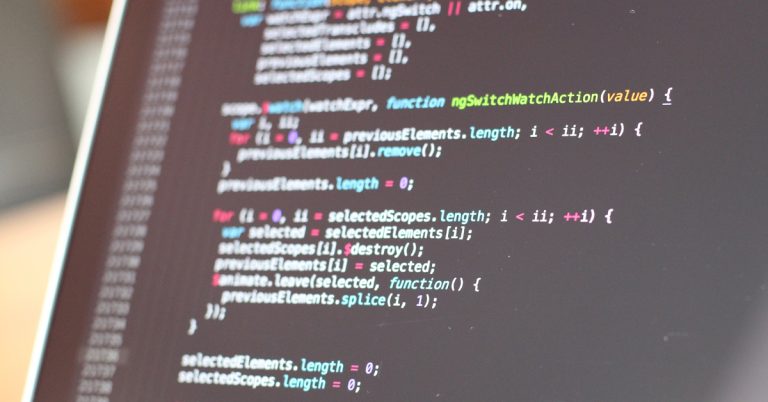In many organizations, petty cash reimbursement is a common practice that facilitates the replenishment of petty cash funds and allows employees to be reimbursed for out-of-pocket expenses. These funds are typically used for small cash disbursements, and the size of the fund is determined by the needs of the company.
To ensure proper management of petty cash, it is important for organizations to have established policies and procedures for creating, disbursing, and replenishing these funds. In this article, you will find a comprehensive breakdown of petty cash reimbursement practices and how they can aid in effective financial management.
Table of Contents
What is Petty Cash Reimbursement?
Petty cash reimbursement is a process that allows employees to get reimbursed for small expenses they have paid for out of their own pockets. It also involves the replenishment of petty cash funds, which are used for minor expenses that are too small to be paid from a credit card or bank account. These funds are typically established by transferring a specified amount from the general account to a custodian who is responsible for managing the fund. The size of the fund should be large enough to cover expenses for at least three to four weeks, depending on the needs of the company.
How to Reimburse Petty Cash?
The custodian responsible for the fund should document any transfers made from the petty cash fund to reimburse expenses. The reimbursement amount should match the exact amount spent, as indicated on the original receipts. It is recommended to have a written petty cash policy that includes examples of reasonable expenses to prevent any misuse of funds.
Petty Cash Reimbursement Process
To ensure proper usage and accurate accounting of funds, the process for petty cash reimbursement typically involves the following steps.
Here is a step-by-step guide for managing petty cash:
1. Assign a petty cash custodian to manage the fund.
2. Determine the required amount for the petty cash fund and transfer it from the company’s bank account to the petty cash fund.
3. Create a transaction log to document all petty cash transactions, including the business purpose for each transaction.
4. When an employee needs to make a purchase using petty cash, they should submit a request to the petty cash custodian along with cash receipts or other supporting documentation.
5. The petty cash custodian reviews and approves the request if it meets company policies and procedures.
6. The employee makes the purchase using the approved amount of petty cash and obtains a receipt.
7. The employee submits the receipt and a completed form to request reimbursement from the petty cash fund.
8. The petty cash reimbursement form should include the date, amount, purpose, and payment recipient.
9. The petty cash custodian reviews and approves the reimbursement form before reimbursing the employee from the petty cash fund.
How to Monitor and Evaluate Your Petty Cash Reimbursement System?
Consider the following steps to effectively monitor and evaluate your petty cash reimbursement system:
1. Create a Petty Cash Account
Add a petty cash account to your chart of accounts in the asset section. This helps you to keep track of the petty cash fund balance.
2. Choose a Management System
Determine which system best suits your needs for managing your petty cash. Under the ordinary system, a lump sum is given to the custodian, while under the imprest system, the petty cashier receives a fixed amount of money and must provide receipts for all petty cash expenses.
3. Assign Responsibility
Choose a trustworthy employee to serve as the petty cash custodian who oversees and records all petty cash expenses. The custodian should have easy access to the location of the petty cash fund.
4. Maintain Accurate Records
To keep track of all expenses and replenishment, the custodian should maintain accurate records of all petty cash transactions. Use a petty cash book or spreadsheet for this purpose.
5. Regularly Review
Conduct regular reviews of your petty cash transactions to ensure that they are both valid and accurate. Analyze spending trends and identify areas where improvements can be made.
Best Practices for Effective Petty Cash Reimbursement
To ensure accurate and accountable management of petty cash, it is essential to follow best practices.
- Establishing a petty cash account with proper documentation and records.
- Safely securing petty cash when not in use.
- Setting a limit for individual purchases to control spending.
- Submitting a reimbursement request form with supporting invoices and authorized approval.
- Avoiding the use of petty cash funds as an operating fund for general business expenses.
How Does Petty Cash Management Software Help with the Reimbursement Process?
A software solution for petty cash management can enhance the accuracy and efficiency of your reimbursement system in the following ways:
- Provides a centralized platform to track petty cash transactions by creating a dedicated account in the chart of accounts
- Enables internal controls to safeguard the funds and ensure proper usage by setting limits and rules for petty cash expenditures
- Facilitates the easy recording of transactions and generating reports to monitor petty cash usage for small expenses in day-to-day business operations
- Allows for taking cash from petty cash as an expense with petty cash as the payment account for accurate record-keeping
- Offers a digital and secure way to manage petty cash costs and employee reimbursements, minimizing risks such as fraud, errors, and non-compliance
Key Takeaway
Effective management of petty cash reimbursements is crucial for the accurate tracking of expenses, regulatory compliance, and prevention of overspending and theft. Utilizing petty cash management software can streamline the process and provide more efficient and accurate tracking of expenses, ensuring that an organization stays on top of its finances.
FAQs
1. How do you record the reimbursement of the petty cash fund?
To record the reimbursement of the petty cash fund, you should first record the total amount of cash taken out, followed by the individual transactions that make up the total amount. Once all transactions are recorded, replenish the petty cash fund with the total amount taken out and record the replenishment in the journal with a debit to the cash account and a credit to the petty cash account.
2. When should the petty cash fund be reimbursed?
Petty cash funds should be reimbursed as soon as the funds are used and reconciled regularly to ensure the amount of petty cash matches the funds reimbursed. Reimbursements can be done at regular intervals, such as monthly or quarterly.
3. What is a cash reimbursement?
A cash reimbursement is a payment made by an employer to an employee for out-of-pocket expenses related to their job duties, such as travel expenses, meals, entertainment, and other costs incurred while conducting business. The reimbursement is made after the employee has provided proof of the expense, usually in the form of a receipt.
4. What is the difference between petty cash and cash reimbursement?
Petty cash is a small amount of cash kept on hand by an organization for making small payments, while a cash reimbursement is a payment made to an employee or other individual for business-related expenses. Cash reimbursements are typically made after an employee has submitted an expense report, itemizing the expenses they have paid out-of-pocket.
5. What is a petty cash fund?
A petty cash fund is a small amount of money used to cover minor, unforeseen expenses that arise within an organization. Petty cash funds are typically used to pay for items that are too small to justify writing a check, such as postage and small office supplies.
6. What are the conditions for reimbursement of petty cash?
The conditions for petty cash reimbursement should be clearly outlined in an organization’s policy document. These conditions should include the amount of the petty cash reimbursement request, the purpose of the expenditure, the item(s) purchased and the vendor details, the date of the expenditure, a receipt for the items purchased, a valid reason for the expenditure, and an authorization from the responsible party for the expenditure.
7. Is petty cash replenishment or reimbursement?
Petty cash replenishment is when a business refills the money in the petty cash fund after it has been used up, usually by transferring money from the business’s main bank account to the petty cash account. Reimbursement, on the other hand, is when a business refunds an employee for an expense they incurred on behalf of the business, usually in the form of a direct deposit, cheque, or cash payment, and after the employee has provided receipts for the expense.













